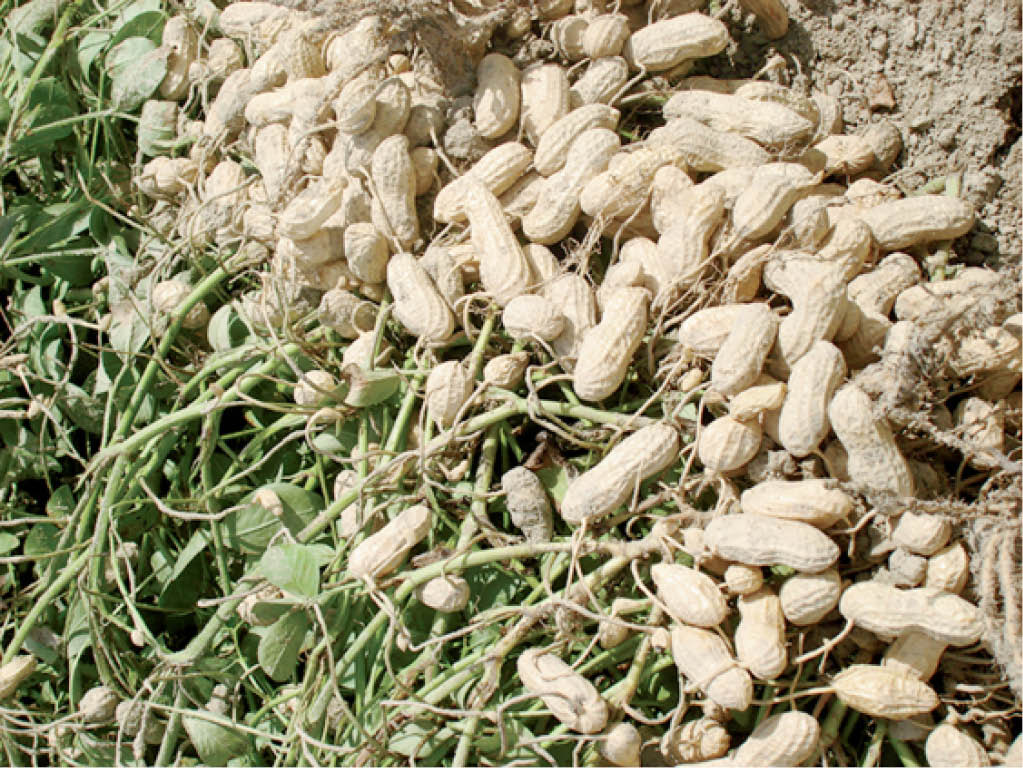Groundnut farmers in most parts of the country are presently harvesting the crop, an exercise some experts say requires certain techniques and care to eliminate waste.
The experts said harvesting at the proper time ensured a high percentage of matured pods at their greatest weight.
- PODCAST: How Internal Wranglings Threaten To Tear PDP
- PDP BoT meets today as plot to sack Secondus thickens
A groundnut farmer, Alhaji Mohammed Salihu, in an interaction with our Agric Editor, noted that one of the greatest tasks for groundnut farmers at this time was to determine correctly when the crop was matured.
This, according to him, is so because groundnut pods development takes place in the soil.
He said a proper time to commence the harvest was when a good number of the pods were fully developed, adding that maturity of pods came when the vine began to turn yellow and started shedding leaves.
He explained that, “Generally, the process of harvesting groundnut begins when the leaves of the plant are light yellow. At this point, the farmers must remove some pods from the ground and make sure that they can see some of the dark veins inside, which indicate that they are ripe and ready to be harvested.”
According to Alhaji Salihu, delay in maturation may occur because of late season drought stress while long periods of rain immediately prior to harvest may result in both yield loss and deterioration of quality of seeds.
According to agropedia, the actual maturity of the pods is determined when they attain normal size with prominent veins, the inside of the shell turns dark and the kernels reach maximum growth, accompanied by good colouration of the seed coat.
It further notes that a fully matured pod can often be difficult to split open with pressure of the fingers, while an immature pod can be split easily; revealing a white inside surface of the pod; which appears also to be spongy in texture.
Tips for testing maturity of groundnut pods
According to agropedia, the farmers can select five to 10 plants from representative areas of the field, pull out all pods from the plants and break open each pod to examine internal hull and seed coat colour to identify maturity of the pods. Separate mature pods from immature pods and calculate the number of mature and immature pods and find their percentages.
If leaf spot or other diseases are problem in the field, farmers should not delay harvest, and if there is a weather forecast that would delay the harvest, this must be taken into account.
Harvesting must be done when sufficient labour and adequate equipment are available.
Ways you can harvest groundnut
Groundnut harvest, according to Alhaji Salihu, consists of series of operations, including digging, lifting, windrowing, stocking and thrashing.
According to agropedia, the actual method of harvesting employed depends on the type of groundnut grown. In bunch type, pod development is confined to the base of the plant and the pegs carrying the pods into the soil are thick and strong. Almost all the pods are recovered with the plants when they are pulled out of the soil.
Agropedia advises that: “Harvesting may sometimes become a problem, especially when the crop has passed the stage of full maturity and the soil has hardened. In this case, it is customary to lift the plants by loosening the soil either by working a hand hoe, a plough or a harrow along the rows.’’
Thereafter, the uprooted plants should be allowed to dry, then are beaten with flails and the pods are separated from the beaten mass by winnowing. The pods left over on the vines are then handpicked.
After harvest, groundnuts should be dried in the open air for a few days. The best way to dry peanuts is to leave them in the sun for a week and try to turn them all over on those days so that the sun shines everywhere and the drying is even. They must be very dry to store in order not be contaminated by fungi.

 Join Daily Trust WhatsApp Community For Quick Access To News and Happenings Around You.
Join Daily Trust WhatsApp Community For Quick Access To News and Happenings Around You.


